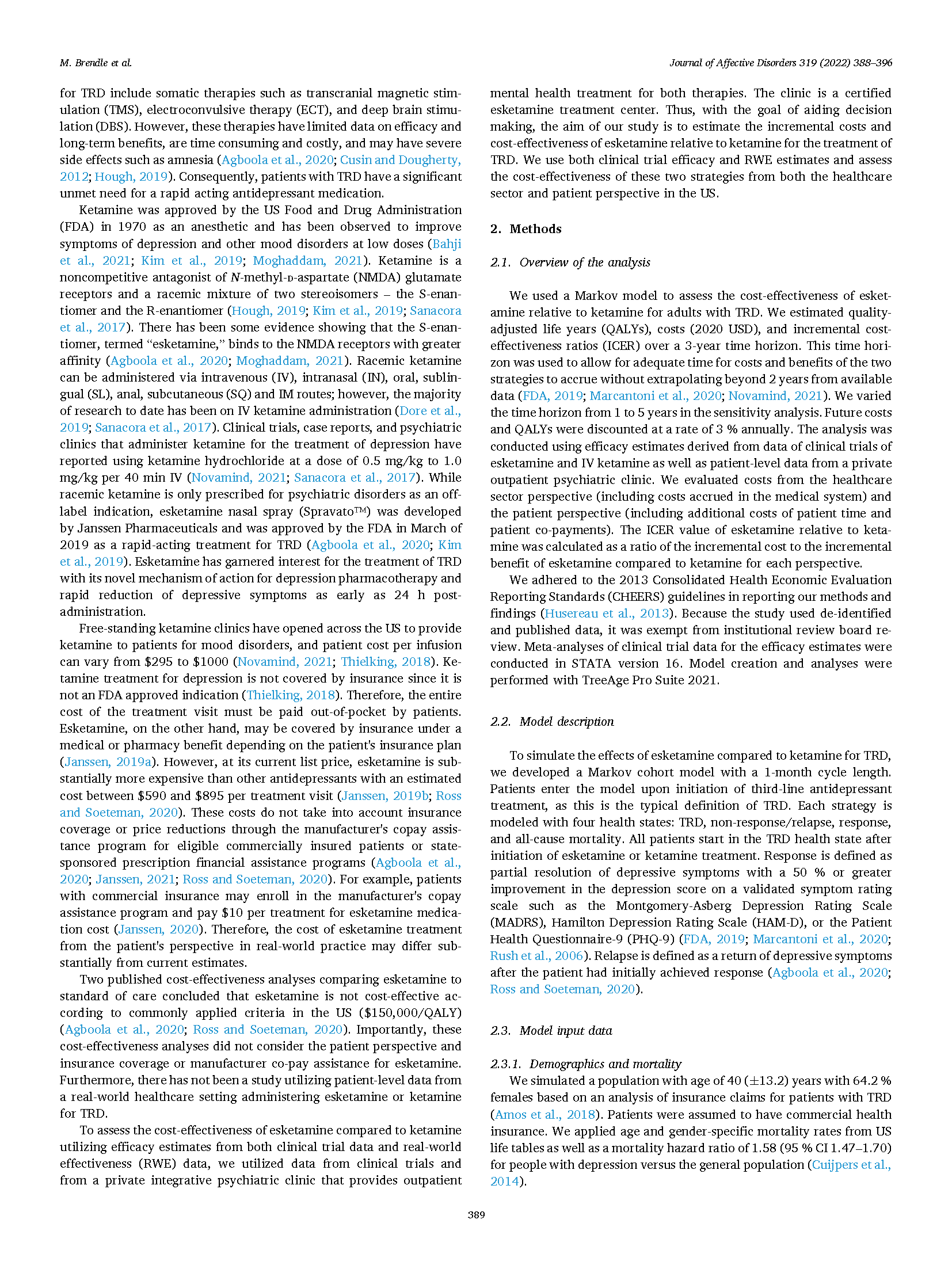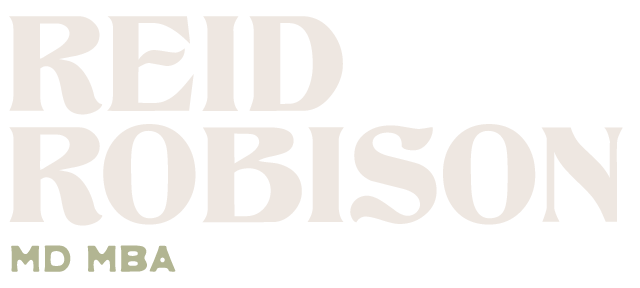Cost-effectiveness of esketamine nasal spray compared to IV ketamine
Journal of Affective Disorders | Published 23 September 2022
Exciting news! Our latest publication has been accepted by the Journal of Affective Disorders and is now published online. The study A big shout-out to our amazing grad student, Madeline Brendle, who headed the paper.
Objective: The aim of this study was to estimate the cost-effectiveness of esketamine nasal spray relative to intravenous ketamine for patients with treatment-resistant depression (TRD) in the US.
Methods: We used a Markov model with a 1-month cycle length, and we estimated quality-adjusted life years (QALYs), costs (2020 USD), and incremental cost-effectiveness ratios (ICER) of esketamine relative to ketamine over a 3-year time horizon, from both the healthcare sector and patient perspectives. We ran the model using efficacy estimates from both clinical trial and real-world effectiveness (RWE) data. One-way and probabilistic sensitivity analyses (PSAs) were performed to evaluate the robustness of findings.
Results: Over a 3-year time horizon, the use of esketamine yielded 1.98 QALYs (RWE/clinical trial efficacy), and the use of ketamine yielded 2.03 QALYs (clinical trial efficacy) or 1.99 QALYs (RWE). Esketamine was dominated by ketamine using the healthcare perspective. ICERs were above $150,000/QALY threshold with the patient perspective. Under the healthcare perspective, PSA showed there are no scenarios where esketamine was cost-effective compared to ketamine. With the patient's perspective, the probability that esketamine was cost-effective compared to ketamine was 0.0055 (clinical trial efficacy) and 0.35 (RWE).
Limitations: The data utilized for efficacy have limitations. The time horizon may fail to capture longer-term costs and benefits.
Conclusions: In this decision analytic model evaluating esketamine versus ketamine for TRD, we found esketamine unlikely to be cost-effective under a healthcare sector perspective. Under a patient perspective, esketamine had similar effectiveness and was less costly than ketamine due to insurance coverage.









Citation
Brendle M, Robison R, Malone DC. Cost-effectiveness of esketamine nasal spray compared to intravenous ketamine for patients with treatment-resistant depression in the US utilizing clinical trial efficacy and real-world effectiveness estimates. J Affect Disord. 2022;319:388-396. doi:10.1016/j.jad.2022.09.083

